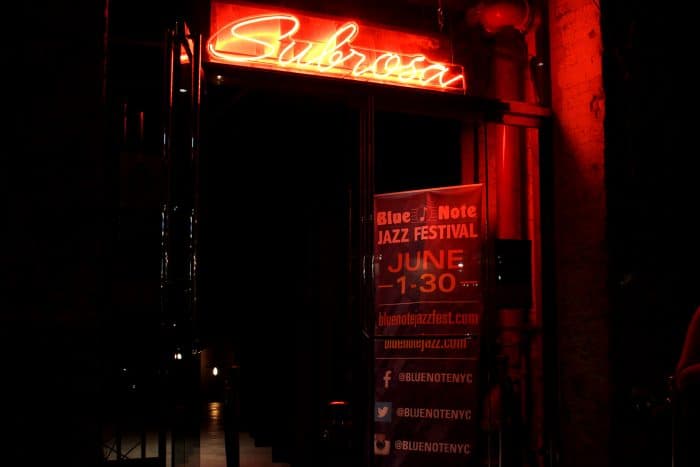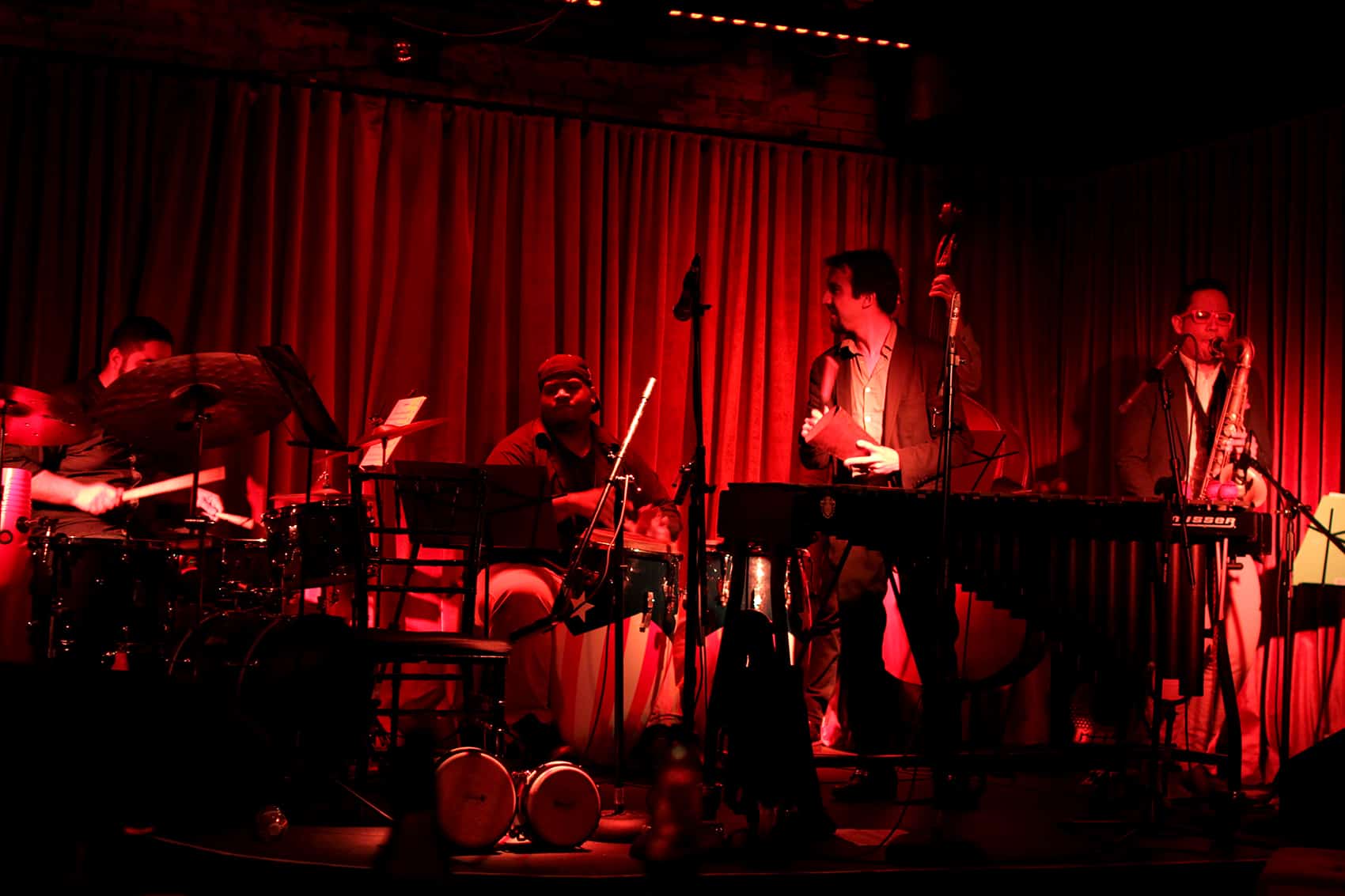NEW YORK – Ear-drum-blasting music envelops you as soon as you enter the club. The large, beautiful basement is lit up with red light and displays warm brick walls. The congas on stage have the Puerto Rican flag painted on them. The audience is riveted to the band and soon starts dancing in front. The leader’s playing style has him moving rapidly in front of his vibraphone, like a dancer. The man is wearing a dark suit and fancy black shoes; he constantly smiles while conducting the band and playing at the same time, making love to his instrument.
The band, Super Mambo, led by Costa Rican vibraphonist Felipe Fournier, features two percussionists, Mexican Guillermo Barrón and Puerto Rican Camilo Molina, as well as bass player Dan Martínez, saxophonist Mario Castro and drummer Joel Mateo, all from Puerto Rico. Fournier met most of his sidemen at the Conservatory of Puerto Rico where he studied in 2007.
The entire club is soon bouncing to the rhythms and melodies of the music, a mix of standards such as Tito Puente’s “Five Beat Mambo” and “Confucius Mambo,” and originals such as Fournier’s “Vibes Bolero” and “Una de cal.” Super Mambo is paying tribute to percussionist Tito Puente, who was not just the King of Timbales, but also a sophisticated vibraphonist as well.
“He chose the big band as a percussion,” explains Fournier. “He is the very first musician to introduce the vibraphone to Latin music.”
The concert was part of New York City’s Blue Note Jazz Festival, held in June. Super Mambo played June 22.
Fournier, who also plays the cowbell, loves Latin jazz in that it marries the intellectual side of jazz with the physical side of salsa.
After the first set, Martínez explains that one of the greatest things when the band is playing is to “see people dancing. It means you’re moving people.” He adds that the band is playing “old music from the 1950s and 1960s, but people are still enjoying it.”
The music they are playing that night is, for him, “spontaneous, intense and joyful.” Fournier feels honored that some of his fans used to attend Puente’s shows at the Palladium, the New York legendary ballroom which became a landmark for the development of Latin music in the 1950s.
“They come to all our shows,” he says.
Subrosa, located at 63 Gansevoort Street, one of the fanciest streets of the Meatpacking District, near the elevated park the High Line, is in one of the trendiest neighborhoods in New York City. The venue opened a few months ago and features live music every night, such as the likes of percussionist Pedrito Martínez, who has a residency at the club. This is the first time Fournier performs here, and it’s for a special occasion, since his concert is part of the Blue Note Festival. Fournier remarks that other Latin bands, such as Gregorio Uribe Bib Band, Mariachi Flor de Toloache and vocalist Xiomara Laugart, have been invited to perform at the festival.

For the second set, Fournier starts with Paul Desmond’s “Take Five” and towards the end, he chooses Hilton Ruiz’s “The New Arrival.” This time, the club isn’t as packed as two hours before, but many fans and strong supporters of the music are here to encourage the band. In New York, Martínez explains, “you have to always do your best, and that competition makes you grow as a musician, as an artist.”
Fournier, who also works with singer and actress Luba Mason, who is married to Latin music icon Ruben Blades, has certainly made good use of New York City as a platform for growth. And it may also be due to Fournier’s belief that art has to be sublime.






